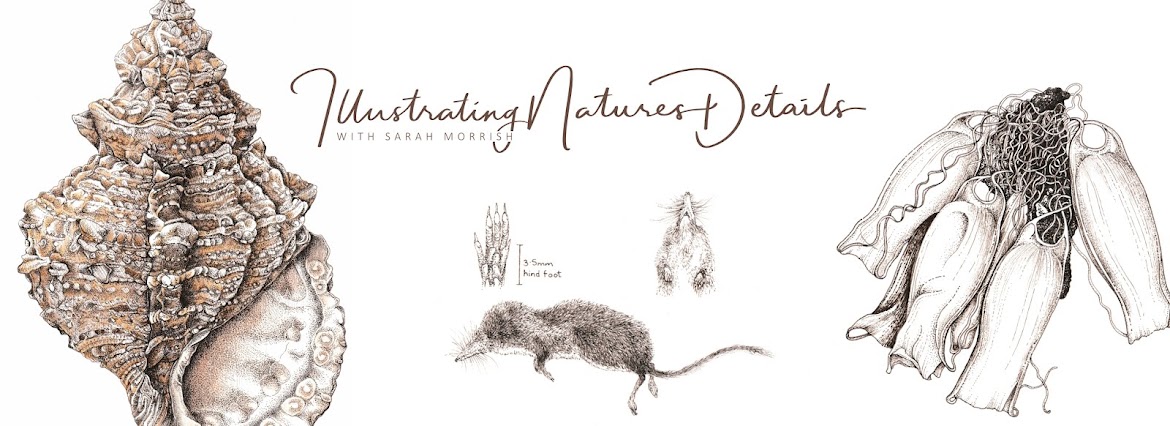Then on Friday more botanical delights, with a trip to the RHS Orchid Show and to see the botanical art on display there too. It's going to be botanical art overload - but I love it !
On to feathers. This is a subject I really enjoy illustrating and I have several commissions on the go involving feathers. Also, this coming Saturday I am teaching a workshop for the Hants & IOW Wildlife Trust on 'Fabulous Feathers'. The workshop is full and there will be a wonderful array of feathers for everyone to illustrate.
I thought that you may enjoy seeing about the process I take in illustrating the majority of feathers.
Firstly a brief guide to the different parts of a feather.
 1. Decide on a suitable composition. Feathers are very easy to position and can be laid flat on your working surface.
1. Decide on a suitable composition. Feathers are very easy to position and can be laid flat on your working surface.2. Use a 2H pencil and draw the central shaft. Pay attention to the length and thickness of the shaft from top to bottom.
3. Draw a feint outline of the vanes and draw the sections where any barbs have separated.
4. Draw any patterns that occur on the vanes of the feather.
5. Be aware that the pattern may be symmetrical, such as in the Jay’s feathers (right).
 6. It is always good practice to experiment with mixing the correct colours to represent the colours found in the feather.
6. It is always good practice to experiment with mixing the correct colours to represent the colours found in the feather.When mixing washes try not to use more than 3 colours of paint. Remember if you need a lighter shade of the mixed wash just add water.
It is very useful when painting a variety of natural objects, to become familiar with creating a range of ‘neutral’ colour mixes. When we say ‘neutral’ we are referring to a range of greys that have different hues.

7. The first wash that you will apply is likely to be quite pale and a neutral mix. With this you will start to define the shape of the vanes, particularly the side where the barbs may be separated and lighter in colour.
Remember to use the white of the paper to your advantage.
The size of the brush you use can vary dependant on the size of the feather. The advantage of using a good quality brush (even a size 7) is that it should retain a good point and enable fine lines to be painted.
Alternatively, I like to use ‘spotter’ brushes. These have shorter hairs but hold a good amount of paint.
8. Once the initial wash is painted the areas of colour can be defined more, gradually adding deeper washes of colour. The marks that you are aiming to create with the brush should be fine, hair-like lines.
 9. Dependant on the feather that you are depicting, there may be a final stage where different painting techniques are required.
9. Dependant on the feather that you are depicting, there may be a final stage where different painting techniques are required.With the Jay’s feathers, white gouache was applied to give an impression of the individual barbs.
Other feathers that I have illustrated:
Barn Owl feather
Peacock feather - slightly stylised




Wonderful subject!
ReplyDeleteVery interesting Sarah - thank you. Lovely studies :)
ReplyDeleteThank you Manon and Denise - they certainly are fascinating subjects to paint :)
ReplyDelete